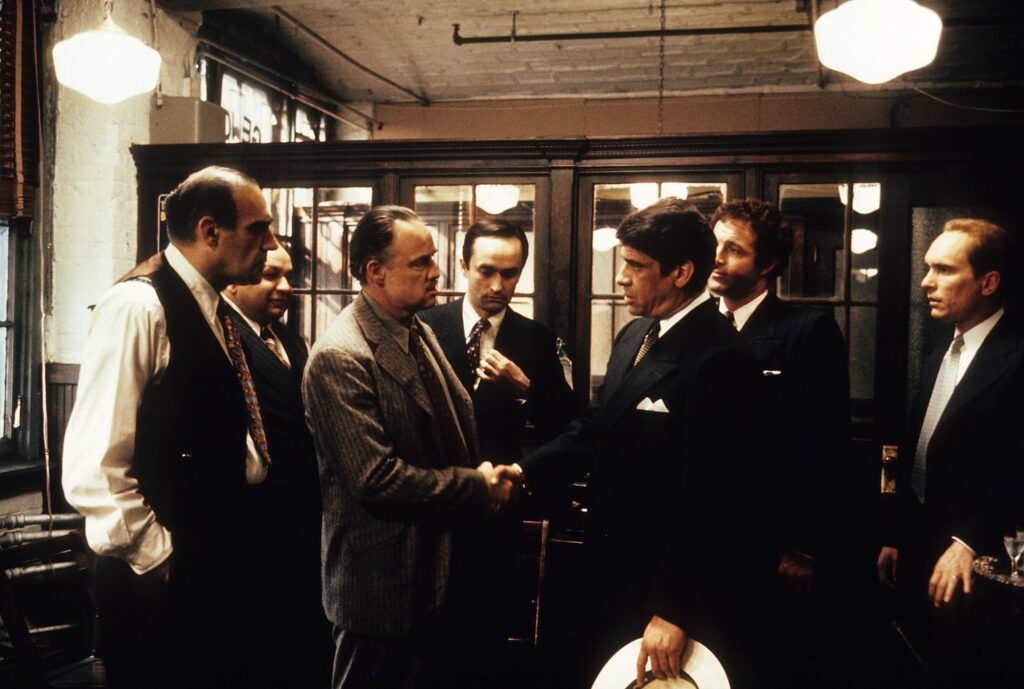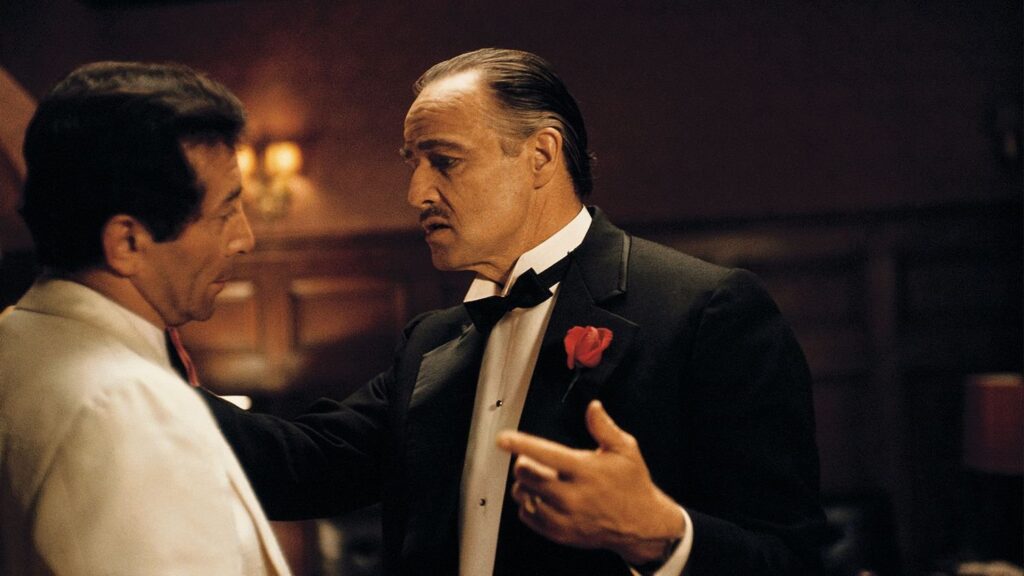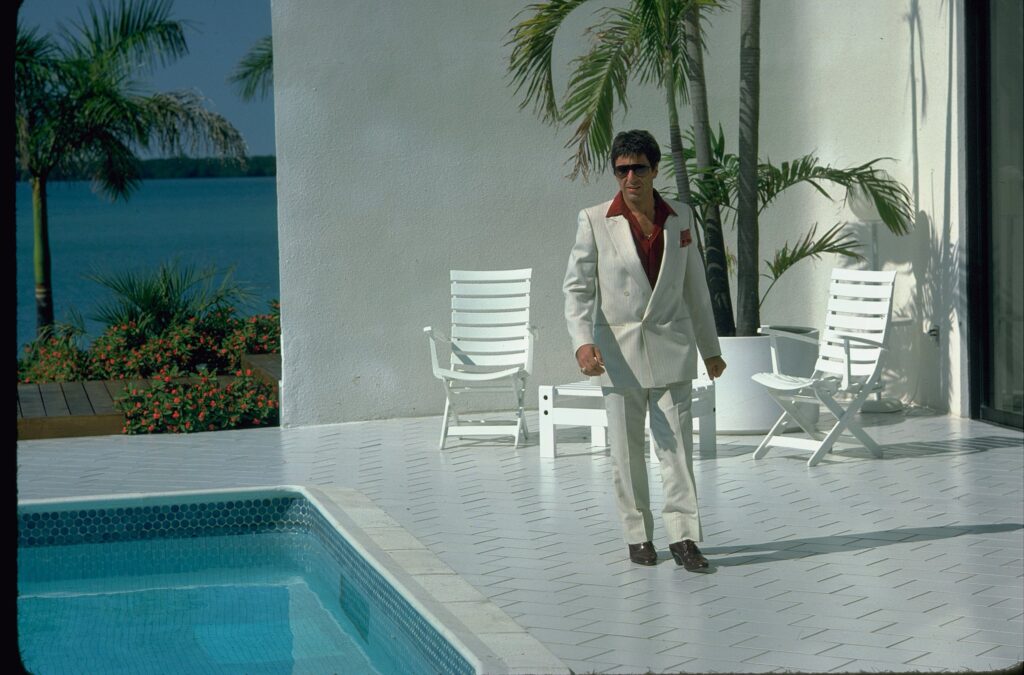
When Francis Ford Coppola’s, "The Godfather" hit theaters in 1972, it not only revolutionized cinema, but also redefined the expectations of the gangster. The men of the Corleone family, led by Don Vito Corleone (Marlon Brando) and his son Michael (Al Pacino), are always dressed in sharply tailored suits. Unlike the more flamboyant mobsters of later films, the Corleones’ style is defined by sophistication.
The dark, three-piece suits, wide lapels, and classic ties symbolize not only wealth, but a deep respect for tradition and hierarchy. The suits are almost always in muted tones—black, gray, and dark brown. Tailoring plays a crucial role in conveying both power and discipline. It acts as a uniform of control over both their family and their criminal empire.
Michael Corleone’s gradual transformation is mirrored through his wardrobe. At the beginning of the film, he wears military uniforms and civilian clothing. By the end, he is fully immersed in the life—donning the same suits as his father and signifying his acceptance of his new role as Don. This became a symbol for how power and fashion are intertwined.

If The Godfather showcased the subtle power of understated, Scarface (1983) offered a complete contrast, introducing the world to gangster style as flamboyant and ostentatious. Al Pacino’s portrayal of Tony Montana, an ambitious Cuban immigrant-turned-drug lord, brought an unapologetic edge to the gangster look. Scarface became the embodiment of the 1980s—an era of excess.
Montana’s wardrobe is the visual representation of his ascent from the Miami slums to the pinnacle of drug empire glory. His brightly colored suits—particularly his infamous white suit with the red shirt—became iconic in pop culture. The wide-lapel jackets, oversized collars, and gold chains were symbols of his newfound wealth.
The oversized sunglasses, pinky rings, and gold watches worn by Montana cemented the idea of the gangster as a figure of wealth. Fashion, in Scarface, was a tool of excess, flaunting prosperity but also feeding the ego. Tony Montana’s lavish style became synonymous with ambition and risk—fashion as a declaration of one’s rise, no matter how fleeting.

These films shifted public perception of mobsters, from the trench-coated criminals of earlier films to stylish, almost aspirational figures. The mobster became a style icon—one whose look was intimidating yet alluring. The custom suits, fine leather shoes, and luxury watches were symbols of success, power, and survival.
Tailoring became central to menswear in the ‘80s and ‘90s, inspired by these larger-than-life characters. Brands like Armani, which outfitted many of the actors in The Godfather, saw their designs become coveted by men who wanted to have that calculated confidence. Even accessories like pocket squares and gold watches became defining elements of the mob aesthetic, bleeding into everyday men’s fashion.
These films created a lasting cultural dialogue around the relationship between fashion and identity. Whether it’s Michael Corleone’s slow acceptance of his fate or Tony Montana’s brazen defiance of it, fashion in mob films has always been about far more than just clothes. The mobster’s style has become immortalized, not just as a cinematic trope, but as a testament to the enduring power of image.